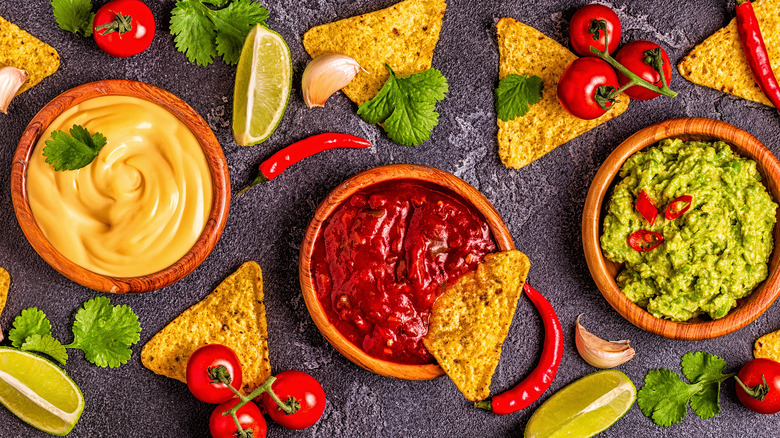Why A Lot Of Food In The Southwest Is Plant-Based
When you think of Southwest cuisine, images of quesadillas, enchiladas, and chili con carne spring to mind. While this classic fare has emerged as iconic representations of this region's cooking culture, these items don't necessarily represent flavors and dishes native to the region. Tex-Mex recipes get mistaken as representative dishes for all of the Southwest, especially considering items from Nevada, Arizona, New Mexico, and the surrounding regions all relied heavily on unique crops to create flavor and texture combos that truly defined the area's cooking culture.
Many staple dishes of the region rely on the "three sisters," consisting of corn, beans and squash (via Eater). El Parasol, a meal consisting of stewed beans, squash, and corn, has come to represent the area. The dish has made appearances on home menus for generations thanks to the area's abundant supplies of these ingredients. In addition to this plant-based stew, locals have cooked up calabacitas, a dish of zucchinis sauteed with corn and chopped green chiles, for years.
A deep history of Southwestern vegetarian cooking
You can't enjoy "three sisters" dishes without one of the most prominent Southwest staples: beans. Whole and refried pinto beans have grown synonymous with the Southwest, traditionally filling tacos, burritos, and more. These crops held over Native American tribes for millenia, thanks to their hardiness and ability to grow with very little water (via Foodal). These beans emerged alongside agave hearts, Arizona walnuts, berries, prickly pear cacti, pine nuts, and even ground acorns to truly differentiate traditional Southwest recipes from those found across the rest of the United States. When meat did grace the tables, locals would cook up local game like turkey, quail, and deer over pigs and cows we might think of when it comes to later Tex-Mex cooking.
At the end of the day, the Southwest defined itself thanks to a lush variety of local produce that defined the original recipes and flavors of the region. Later settlers would bring new ingredients, meats, and cooking cultures that shaped the modern vision of the region's food, but the original, native ingredients continued to define the area. Thanks to the Southwest's abundance of unique crops and age-old plant-based recipes, the spirit of the region's dishes continue to win over new diners each day.

